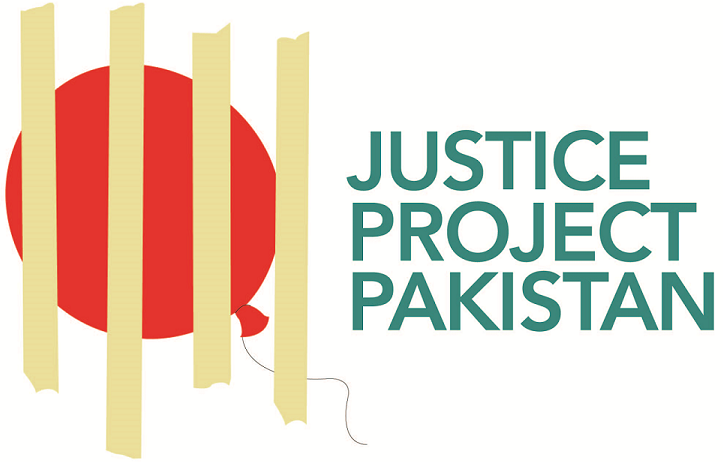 Khizar Hayat, a mentally ill death row prisoner, passed away on March 22, 2019, at Jinnah Hospital Lahore after being critically ill. He had spent 16 years on death row.
Khizar Hayat, a mentally ill death row prisoner, passed away on March 22, 2019, at Jinnah Hospital Lahore after being critically ill. He had spent 16 years on death row.
Khizar was sentenced to death in 2003 for fatally shooting a fellow police officer and was first diagnosed with “treatment-resistant” paranoid schizophrenia by jail authorities in 2008. His mental health record consistently referred to his delusions, psychosis, and his mental illness, and showed that he had been prescribed powerful anti-psychotic medication.
In January 2019, after Khizar’s fourth death warrant was suspended by the Supreme Court, his case was referred to a larger bench of the Supreme Court. But he passed away before his case could be heard in the SC.
BACKGROUND
Khizar worked as a police officer in a village where he lived with his wife and children. Those who knew him described him as a kind man, but “very slow” and easily manipulated.
In the months leading up to the incident, Khizar had fallen under the influence of a local ‘pir’ — a spiritual healer who fraudulently convinced Khizar to sign over his lands and property to him. Under his influence, Khizar was eventually implicated for fatally shooting his friend and fellow police officer, Ghulam Ghous.
Khizar pleaded not guilty during his trial, but his lawyer failed to introduce any evidence or call a single witness in his client’s defence. Khizar was eventually sentenced to death in 2003. Despite documentary evidence of Khizar’s mental illness, the courts repeatedly dismissed his appeals.
| YEARS ON DEATH ROW: 16 |
|
MENTAL ILLNESS: PARANOID SCHIZOPHRENIA |
|
IMPRISONED AT:JAIL HOSPITAL, KOT LAKHPAT, LAHORE |
|
LATEST DEVELOPMENT: Civil petition currently pending before the Supreme Court |
RECENT CASE UPDATES
In December 2018, the Lahore High Court dismissed a petition seeking Khizar’s transfer to a mental health facility, stating that “emotional disorders of like nature were not viewed as factors sufficient enough to impede execution”, making way for another execution warrant. The National Commission for Human Rights (NCHR) then ordered the relevant authorities to refrain from issuing Khizar’s black warrant until the matter was decided by the Supreme Court. However, jail authorities issued his execution warrant on January 10, 2019, in clear violation of NCHR’s orders.
Public outrage and timely intervention by the Supreme Court saved Khizar’s life. His execution was stayed and his case was referred to a larger bench of the SC, currently hearing the precedent-setting case of two other mentally ill death row prisoners Imdad Ali and Kanizan Bibi.
Unfortunately, Khizar fell critically ill before his case could proceed in the Supreme Court. He was shifted to Jinnah Hospital, Lahore, on March 15, 2019, in critical condition, and passed away in the early hours of March 22.
KHIZAR’S MENTAL ILLNESS
Jail medical records show that Khizar first started exhibiting ‘psychiatric symptoms’ in February 2008, although the seeds of paranoid schizophrenia were sown long before that. By September, his illness had become severe enough to warrant a month-long hospital stay in the jail. Since then, he had constantly been prescribed powerful anti-psychotic medications such as Risperidone.
Khizar’s mental health deteriorated to the point where he believed that the world was coming to an end because the Americans had landed on the moon, and the moon was now having a dire effect on the world. He believed that the solutions to the world’s problems were to be found in the toilet in his cell, through its special connection to the Earth. In his last years, Khizar was unable to take care of his body, often dressing in filthy clothes, disrobing completely, or throwing food and faeces out of his cell.
Khizar’s mental illness had caused him considerable physical suffering too. Jail records show that in 2009, he was admitted to a public hospital with severe head injuries requiring urgent surgery. Khizar’s cellmates – cooped up 24 hours a day in a cell with a delusional and confused individual – had violently attacked him. Khizar’s lawyers frequently recorded seeing him injured during their visits. Eventually in 2012, the attacks became so frequent and severe that Khizar was moved to an isolated cell in the jail hospital.
In early 2009, Khizar’s mother requested that her son be transferred to a proper medical facility to receive treatment. Her requests fell on deaf ears.
Khizar spent the last six years of his life alone in his cell in the hospital, effectively living in solitary confinement, despite the fact that punishment for the mentally ill is not permitted under Pakistani law; not even for the most heinous offences.
“IF A PERSON IS MENTALLY ILL, HOW CAN YOU HANG THEM?”
– FORMER CHIEF JUSTICE SAQIB NISAR,
during the hearing of mentally ill death row prisoners
Kanizan Bibi and Imdad Ali
BASIS OF COMMUTATION
Mentally ill defendants repeatedly slip through the cracks in Pakistan’s criminal justice system. The lack of mental health treatment and training in the criminal justice system, as well as in Pakistan generally, means that many individuals never even get diagnosed. In fact, for many indigent mentally ill defendants, their first contact with a mental health professional is in jail. As a member state of the United Nations, the Government of Pakistan has ratified a number of international human rights treaties that grant rights and special protections to persons suffering from mental illnesses. These include:
ICCPR
The United Nations Human Rights Committee has recognized in various decisions, including in R.S v Trinidad and Tabago (684/96), that the execution of mentally-ill prisoners is prohibited as cruel, inhuman and degrading treatment under Article 6 and 7 of the International Covenant on Civil and Political Rights (ICCPR), to which Pakistan became a party in 2010.
In July 2015, four Special Rapporteurs of the UN urged the Government of Pakistan to halt Khizar’s execution as it would be inconsistent with international human rights law. Remarking on Khizar’s plight, the UN Special Rapporteur on the right to health, Dainius Pûras, said: “We call on the authorities of Pakistan to protect the right to health of … Khizar Hayat, and other inmates in death row with severe psychosocial disabilities, irrespective of their legal situation, guaranteeing their access to the health services required by their situation.”
SAFEGUARDS GUARANTEEING PROTECTION OF THE RIGHTS OF THOSE FACING THE DEATH PENALTY
The UN Economic and Social Council (ECOSOC) in 1984 adopted “Safeguards Guaranteeing Protection of the Rights of Those Facing the Death Penalty.” In the same year, the Safeguards were endorsed by consensus by the UN General Assembly. The safeguards guaranteeing protection of the rights of those facing the death penalty constitute an enumeration of minimum standards to be applied in countries that still impose capital punishment.
The Third Safeguard states:
“Persons below 18 years of age at the time of the commission of the crime shall not be sentenced to death, nor shall the death sentence be carried out on pregnant women, or on new mothers, or on persons who have become insane.”
The third safeguard was amplified by the Economic and Social Council in 1988 with the words “persons suffering from mental retardation or extremely limited mental competence.”
 Loading...
Loading...
-
- CHIEF JUSTICE SUSPENDS KHIZAR’S EXECUTION AFTER CIVIL SOCIETY, ARTISTS AND JOURNALISTS CAMPAIGN TO SAVE HIM
- PAKISTAN MUST HALT IMMINENT EXECUTION OF MENTALLY ILL PRISONER KHIZAR HAYAT
- Khizar’s Execution to be Stayed in Light of Imdad’s Pending Case
http://us3.campaign-archive1.com/?e=[UNIQID]&u=4d452280bc016abdd37a94bc6&id=83783aa112
- NATIONAL COMMISSION FOR HUMAN RIGHTS OUTRAGED AT “CARELESS” JAIL SUPERINTENDENT
http://us3.campaign-archive2.com/?e=[UNIQID]&u=4d452280bc016abdd37a94bc6&id=2f95bcdf9c
- THE OTHER IMDAD’: BLACK WARRANTS ISSUED FOR ANOTHER SCHIZOPHRENIC PRISONER
http://us3.campaign-archive1.com/?e=[UNIQID]&u=4d452280bc016abdd37a94bc6&id=cb74003764
- Hearing tomorrow on execution of mentally-ill
http://us3.campaign-archive2.com/?e=[UNIQID]&u=4d452280bc016abdd37a94bc6&id=ce945b06e4
-
- 28/03/2018
LHC seeks report on schizophrenic prisoner’s health: Dawn
JPP calls for treatment of schizophrenia death-row prisoner: The Nation
https://nation.com.pk/28-Mar-2
018/jpp-calls-for-treatment-of -schizophrenia-death-row-priso ner JPP calls for schizophrenic death row prisoner to be shifted to a mental health facility: Daily Times
- 15/06/2015
Pakistan Prepares to Execute Mentally Ill Inmate (UCA News)
http://www.ucanews.com/news/pakistan-prepares-to-execute-mentally-ill-inmate/73780
Pakistan Set to Violate International Law by Hanging a Mentally Ill Prisoner (Asia Despatch)
- 16/06/2015
Pakistani Court Suspends Mentally Ill Convict’s Execution (Yahoo News)
https://uk.news.yahoo.com/pakistani-court-suspends-mentally-ill-convicts-execution-053240254.html
Pakistan Issues Temporary Stay of Execution for ‘Mentally Ill’ Man (UCAN India)
http://www.ucanindia.in/news/pakistan-issues-temporary-stay-of-execution-for-mentally-ill-
- 23/07/2015
Mentally Ill Man to be Hanged in Pakistan’s First Post-Ramadan Executions (Common Dreams)
Pakistan: Don’t Execute Man with Mental Disability (Human Rights Watch)
https://www.hrw.org/news/2015/07/23/pakistan-dont-execute-man-mental-disability
- 24/07/2015
Black Warrants for ‘Mentally-Ill’ Convict (Dawn)
http://www.dawn.com/news/1196019
Rights Group Urges Pakistan Not to Hang Mentally Ill Man (BBC)
http://www.bbc.com/news/world-asia-33650972
Black Warrants for ‘Mentally-Ill’ Convict (News United)
http://www.newsunited.com/black-warrants-for-mentally-ill-news/17530198/
- 26/07/2015
Pakistan Court Stays Hanging of ‘Mentally Ill’ Prisoner (Times of India)
Insane Convict’s Execution Halted in Pakistan (Business Standard)
Pak Court Stays Hanging of ‘Mentally-Ill’ Prisoner (The Hindu)
http://www.thehindu.com/news/international/pak-court-stays-hanging-of-mentallyill-
Execution of ‘Mentally Ill’ Convict Stayed (Pakistan Post)
http://www.pakistanpost.pk/2015/06/execution-of-mentally-ill-convict-stayed.html
Death Sentence Stayed (The News)
https://www.thenews.com.pk/print/53003-death-sentence-stayed
- 27/07/2015
Pakistan Urged to Halt Execution of Severely Disabled Prisoner
- 29/07/2015
U.N. Rights Experts Urge Pakistan to Halt Ongoing Surge in Executions and to Reinstate Moratorium on Death Penalty (U.N. Human Rights)
http://www.ohchr.org/EN/NewsEvents/Pages/DisplayNews.aspx?NewsID=16275&LangID=E
- 08/09/2015
Hearing Tomorrow on Execution of Mentally-Ill Pakistani (Pakistan News)
http://www.pakistannews.net/index.php/sid/236507135
- 18/07/2015
Pakistan’s Hypocritical Season of Mercy (The Express Tribune)
http://tribune.com.pk/story/922757/pakistans-hypocritical-season-of-mercy/
- 23/07/2015
Executing the Mentally Ill (The Nation)
http://nation.com.pk/columns/23-Jul-2015/executing-the-mentally-ill
- 10/08/2015
Insanity Executed (Daily Times)
http://www.dailytimes.com.pk/opinion/10-Aug-2015/insanity-executed
- 15/08/2015
The Human Tragedy behind the Numbers (The Express Tribune)
http://tribune.com.pk/story/929979/death-penalty-the-human-tragedy-behind-the-numbers/
Ask Prime Minister Mr. Imran Khan to #BringItBack
Prime Minister Mr. Imran Khan, we the undersigned call on you to show mercy to the mentally ill, the physically disabled and juvenile offenders who are currently on death row. We strongly urge you to undertake action to reform our criminal justice system that continues to punish only the most vulnerable members of our society. We demand that until this is done, the Government of Pakistan reinstates the moratorium on the death penalty.
168
signatures so far!
Views: 262
